16 Gorgeous Fish With Fins That Always Steal The Spotlight
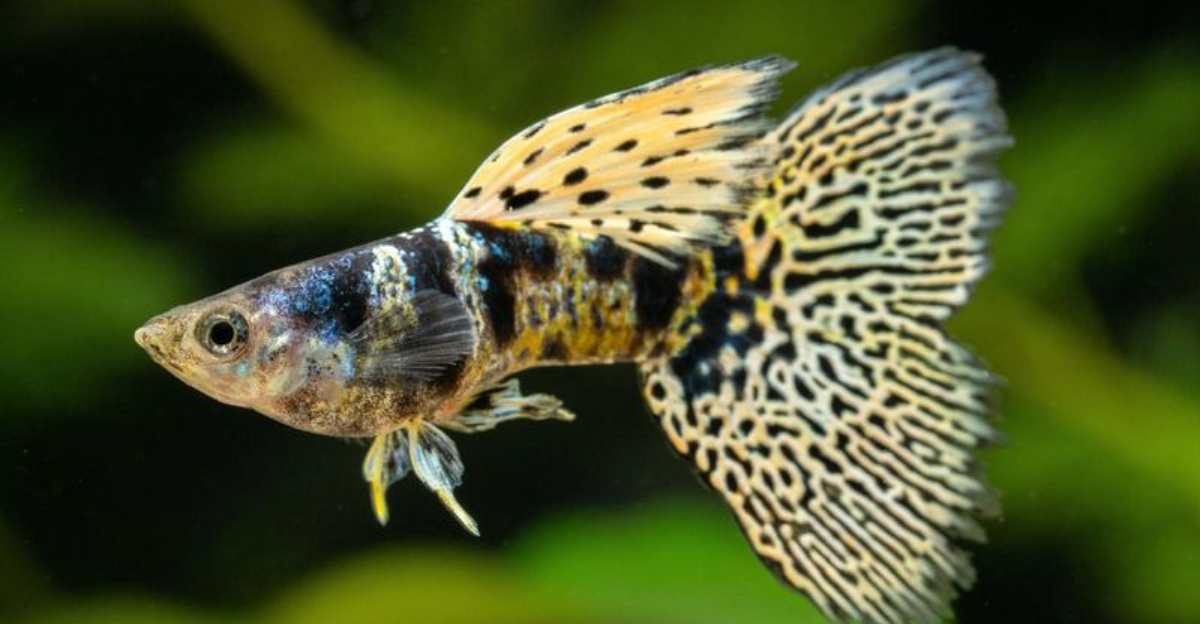
Fish are fascinating creatures that boast an incredible diversity of fin shapes. These fins not only define their unique appearances but also play crucial roles in their survival, including locomotion, stability, and attraction.
Each species has evolved distinct fins to thrive in their specific environments, offering a captivating glimpse into the wonders of aquatic life.
1. Threadfin Butterflyfish

This species is known for its extended dorsal filament that resembles a delicate thread flowing behind it.
Combined with a bold yellow-and-black color scheme, it adds elegance to any coral reef. The trailing fin alone makes it unforgettable.
2. Longfin Bannerfish
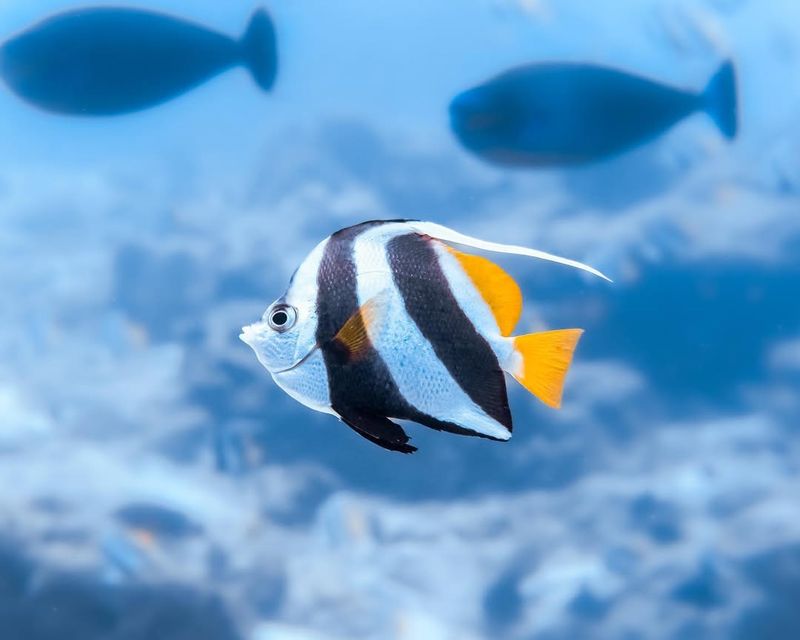
Often mistaken for the Moorish idol, the longfin bannerfish is equally striking.
It’s named for its long, flowing dorsal fin that waves behind it like a ribbon in the current. In groups, they create a spectacular display of motion and contrast.
3. Lionfish
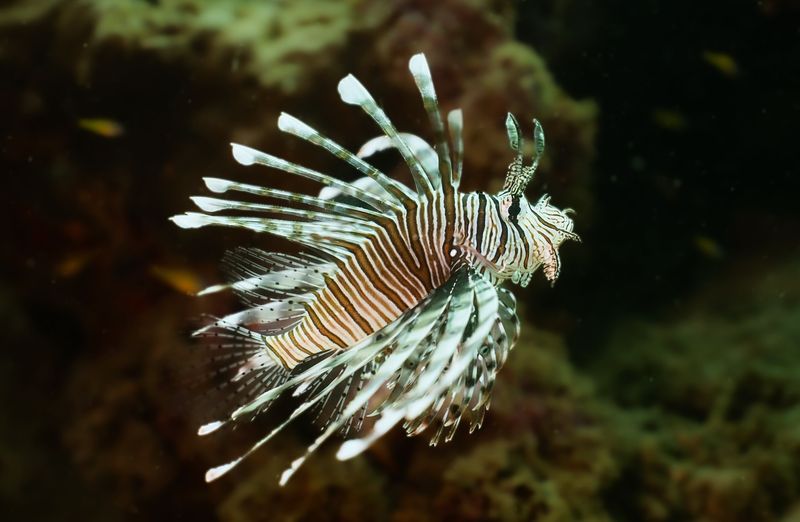
With bold stripes and flowing, venomous spines, the lionfish is as beautiful as it is dangerous.
Native to the Indo-Pacific, it moves gracefully through the water, its fins resembling a lion’s mane. Its dramatic appearance makes it a standout in any reef setting.
4. Betta Fish
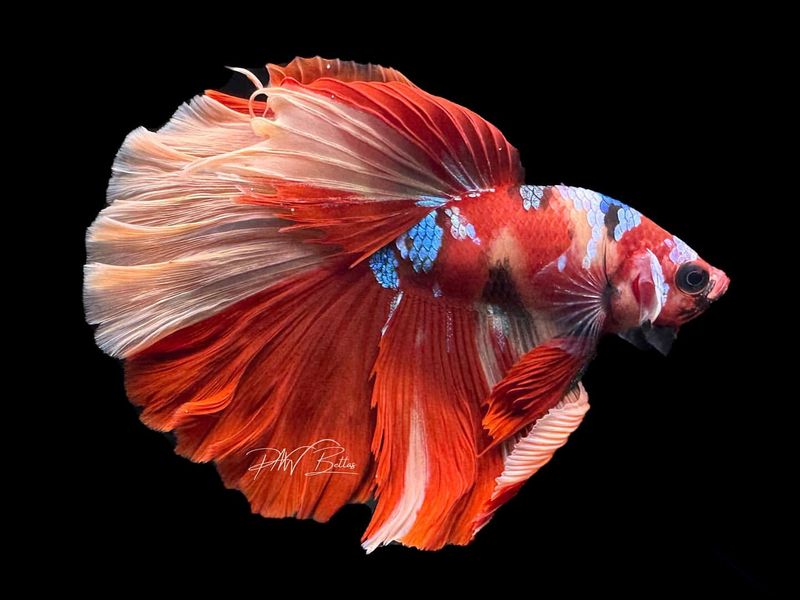
Betta fish are known for their wide variety of colors and elaborate, fan-like fins.
Also called Siamese fighting fish, they’re both fierce and elegant, displaying their fins like living underwater art. Their flowing tails and intense hues make them favorites in home aquariums.
5. Moorish Idol
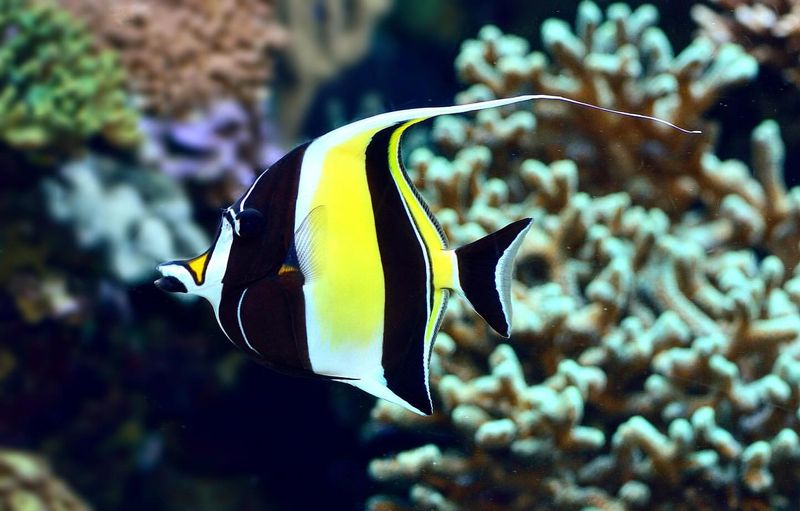
This eye-catching fish boasts striking black, white, and yellow stripes along with a long, ribbon-like dorsal fin that trails behind it like a banner.
Often mistaken for the similar-looking bannerfish, the Moorish idol is hard to keep in captivity but stunning in the wild.
6. Sailfish
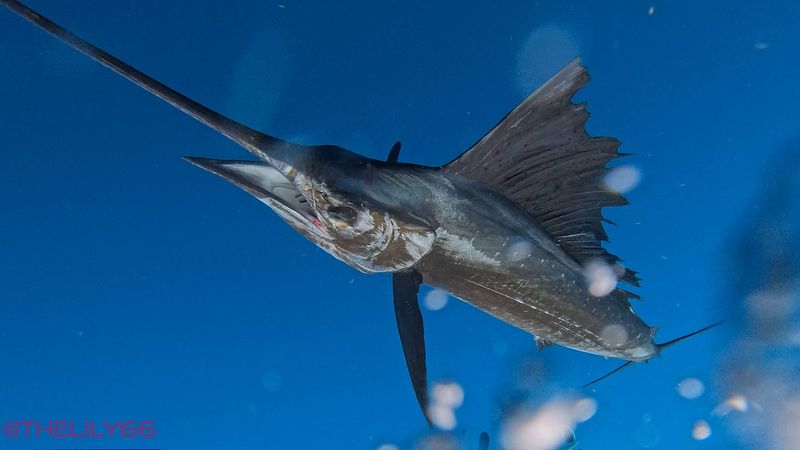
Sailfish are built for speed, with an enormous sail-like dorsal fin that they raise dramatically when hunting.
This fin helps them herd fish while moving through the ocean at incredible speeds. Sleek and powerful, they’re living proof that beauty and performance can go hand-in-hand.
7. Mandarinfish
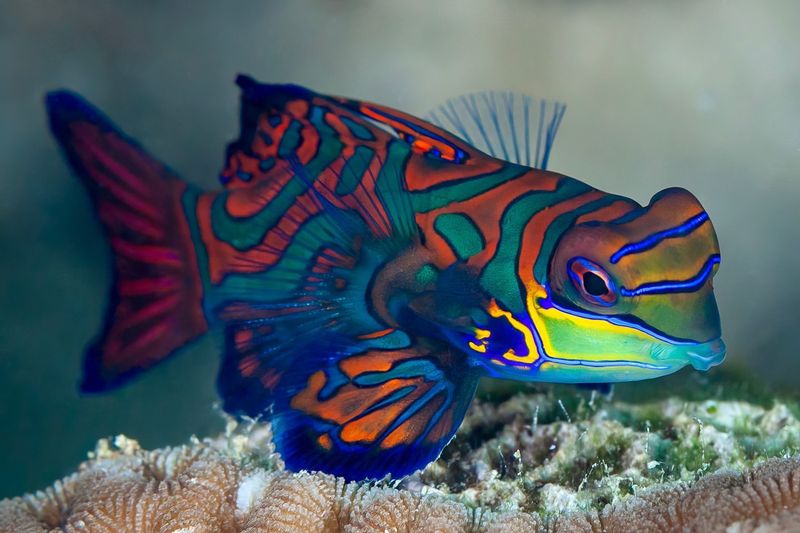
The mandarinfish looks like a living painting, covered in vibrant swirls of blue, green, orange, and yes—purple.
Its small, fluttering fins add to its ethereal appearance as it glides among coral. These reef dwellers are shy but unforgettable.
8. Banggai Cardinalfish
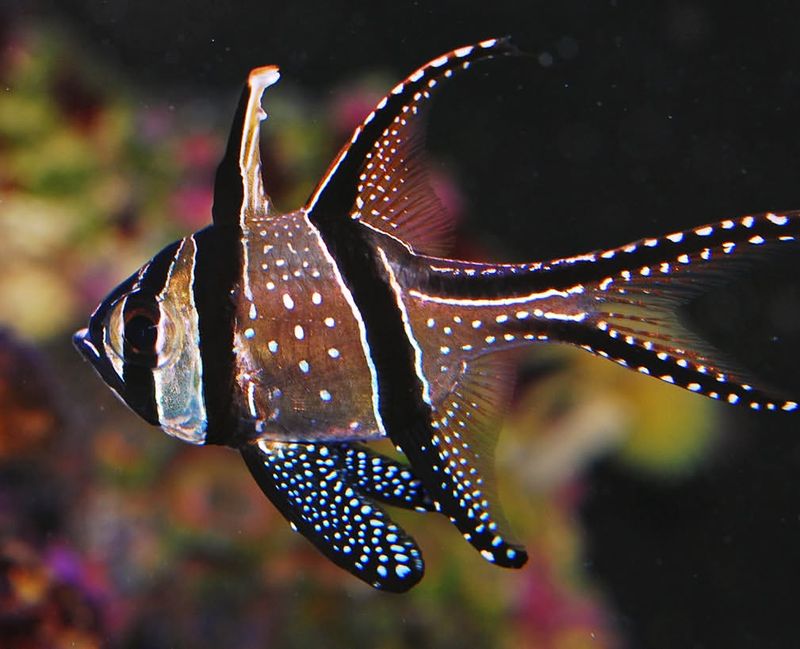
This striking black-and-white fish features elegant, elongated fins that give it a floating, graceful look.
Native to Indonesia, it’s instantly recognizable thanks to its dramatic patterns and slow, hovering swim. In pairs or groups, their synchronized movement is mesmerizing.
9. Flying Fish
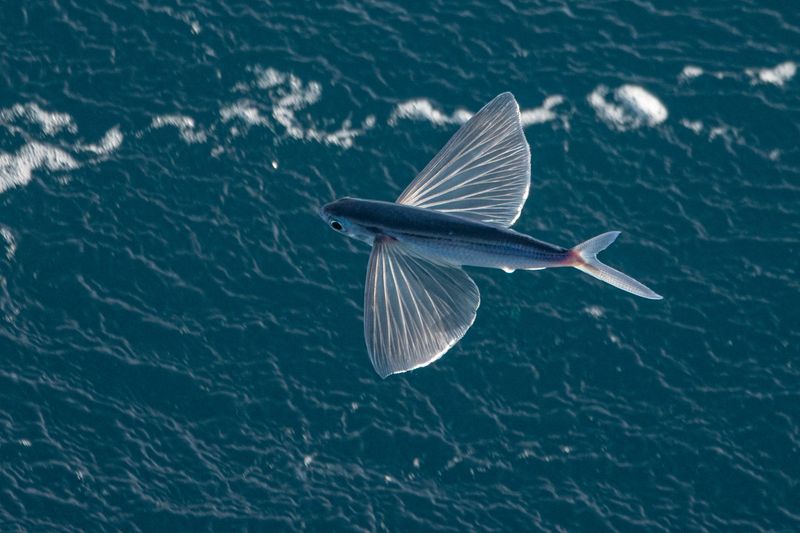
Yes—they really fly. These remarkable fish use their long pectoral fins like wings to glide above the water’s surface.
It’s not just impressive—it’s a defense mechanism that helps them escape predators in a truly show-stopping way.
10. Clownfish
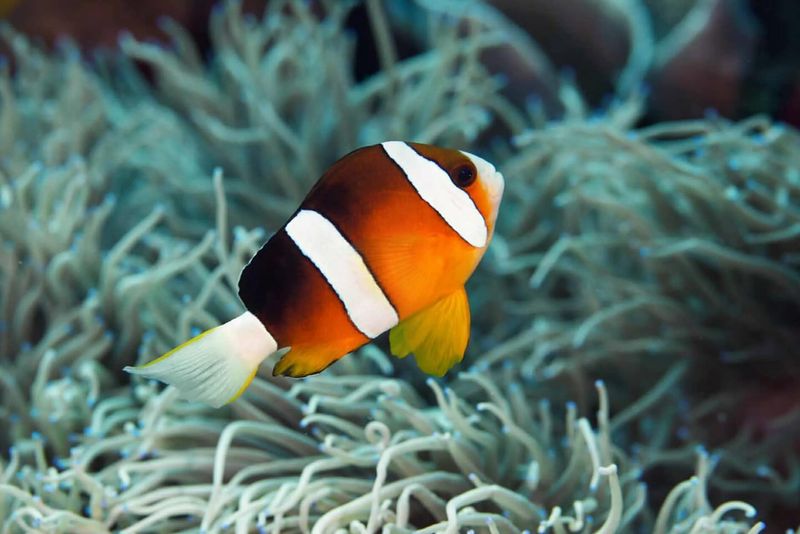
Bright orange with bold white stripes, the clownfish is instantly recognizable—and not just because of a certain movie.
Their small, rounded fins and smooth swimming style keep them close to their anemone homes. Their flashy appearance and friendly nature make them reef celebrities.
11. Koi Fish
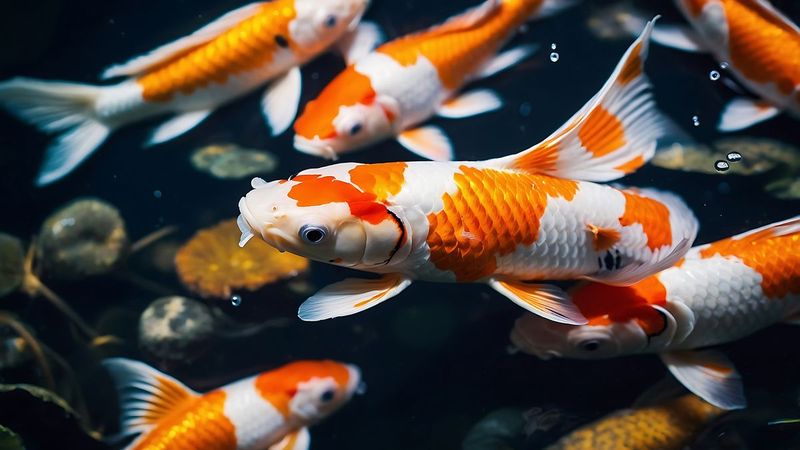
Koi are living jewels, bred for their vivid colors and elegant, fan-shaped fins.
Whether gliding through a pond or gathering near the surface, their movement is hypnotic. With hues ranging from red and gold to pure white, they’ve become symbols of peace and beauty.
12. Triggerfish
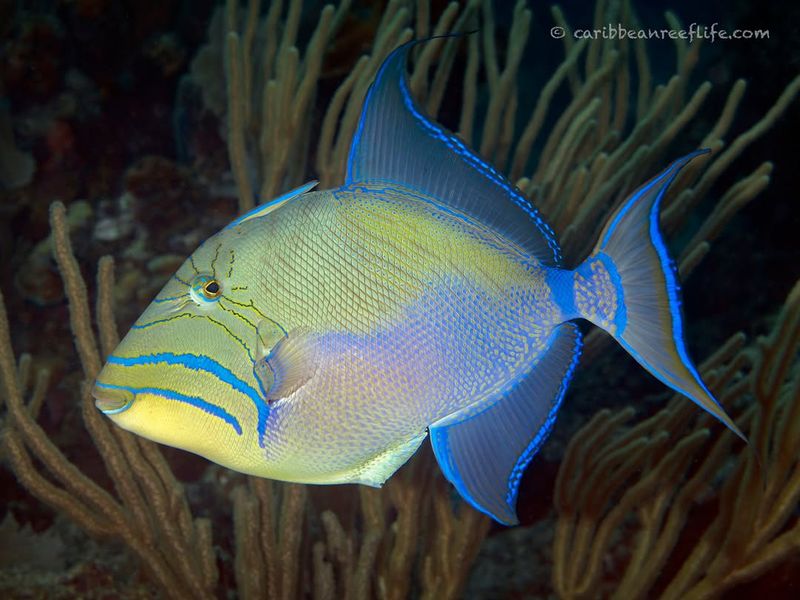
Triggerfish have tough, angular bodies, but their fins are what give them flair.
Their dorsal fins can lock into place like a trigger, helping them wedge into crevices for protection. With bold colors and sharp patterns, they’re both functional and eye-catching.
13. Angelfish
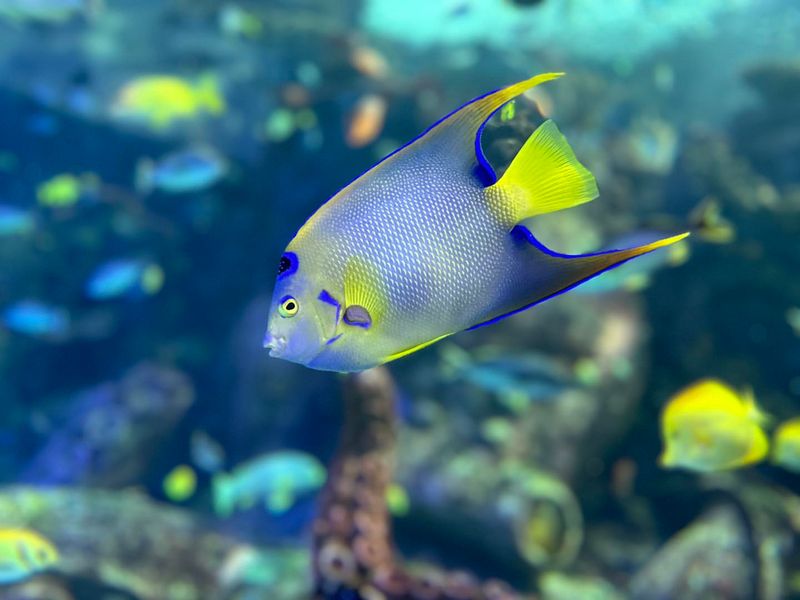
Angelfish boast tall, triangular fins that add grace to their already beautiful bodies.
Whether in freshwater or marine varieties, their bold stripes and striking shapes make them aquarium favorites. They glide through the water like royalty.
14. Butterflyfish
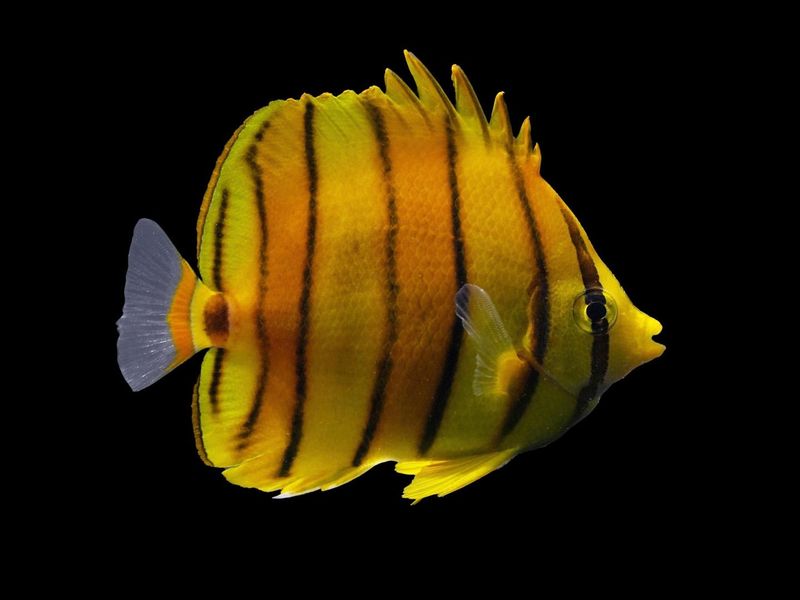
These delicate-looking reef fish have thin, disc-shaped bodies and long, trailing fins.
Their vivid patterns and gentle swimming motion make them feel like the butterflies of the sea. Each species is like a different piece of tropical artwork.
15. Guppy
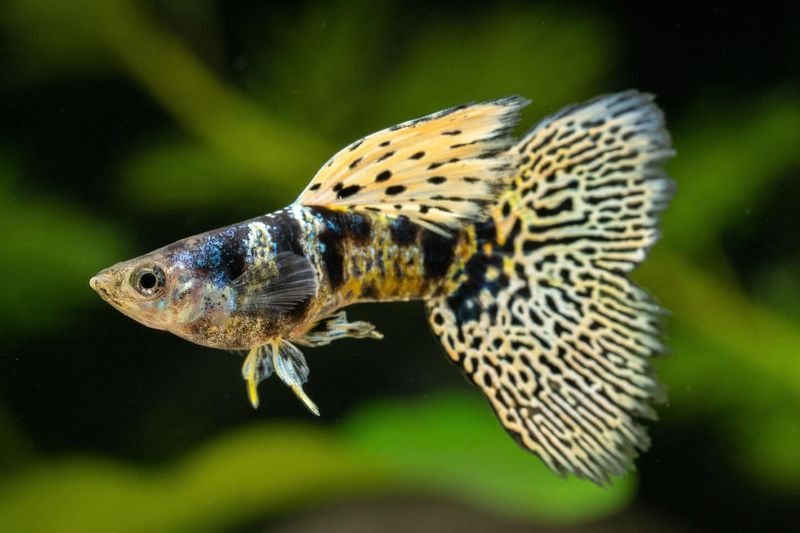
Tiny but dazzling, guppies sport large, flowing tails that often resemble silk fans.
Their fins come in a rainbow of colors and patterns, especially in males. Despite their size, guppies command attention wherever they swim.
16. Discus Fish
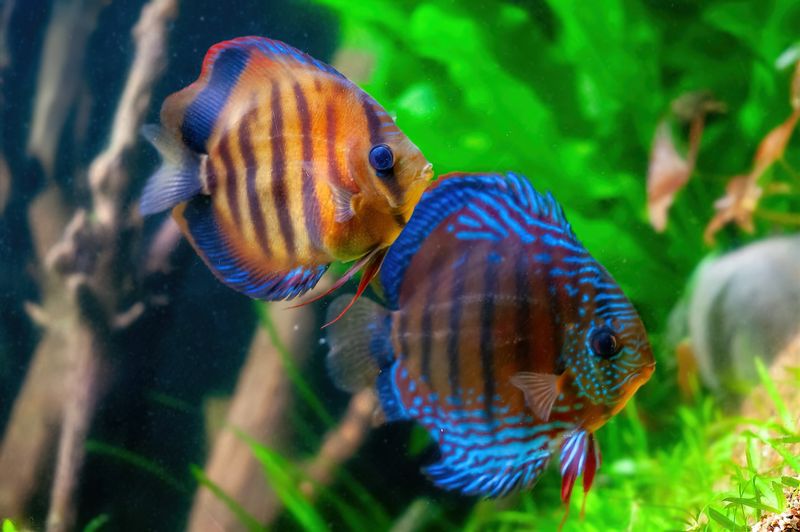
With perfectly round bodies and ribbon-like fins, discus fish are like underwater medallions.
They come in a spectrum of iridescent colors and glide effortlessly through the water. Their calm demeanor and symmetrical beauty make them a showpiece in any aquarium.






